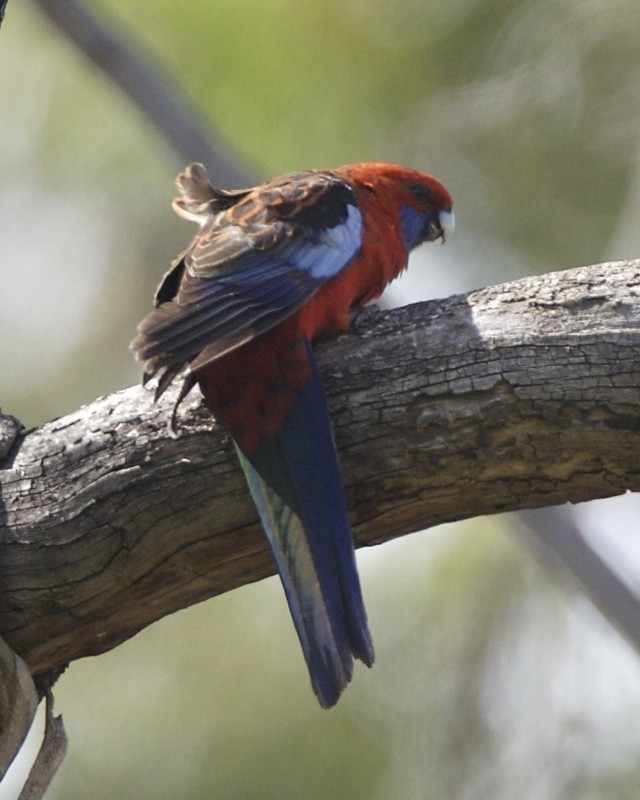Crimson Rosella
A species of Rosellas, Also known as Pennant's Rosella, Elegant Rosella Scientific name : Platycercus elegans Genus : Rosellas
Crimson Rosella, A species of Rosellas
Also known as:
Pennant's Rosella, Elegant Rosella
Botanical name: Platycercus elegans
Genus: Rosellas
Content
Description People often ask General Info
 Photo By Lip Kee Yap , used under CC-BY-SA-2.0 /Cropped and compressed from original
Photo By Lip Kee Yap , used under CC-BY-SA-2.0 /Cropped and compressed from original Description
Platycercus elegans is a medium-sized Australian parrot at 36 cm (14 in) long, much of which is tail. There are seven subspecies, three of which are actually crimson. The red is replaced by yellow in the case of var. flaveolus and a mixture of red, orange and yellow in the Adelaide rosella. Adults and juveniles generally show strikingly different colouration in south-eastern populations, with predominantly greenish-olive body plumage on the juvenile, most persistent on the nape and breast. Juveniles are said to 'ripen' as they get older and turn from green to red. All races have blue cheeks and black-scalloped blue-margined wings and predominantly blue tail with predominantly red coloration. The crimson rosella's blue tail feathers are one of the favourite decorations of the satin bowerbird. The bill is pale grey and the iris dark brown. There is very little sexual dimorphism in crimson rosellas. The most noticeable difference between genders is that males are up to 15% larger, and have a relatively larger and wider beak. 
Size
36 cm
Life Expectancy
27 years
Nest Placement
Tree
Feeding Habits
Crimson Rosella consume fruits, seeds, nectar, berries, nuts, and insects, including larvae. They forage in trees and on the ground, showing versatile feeding behaviors and a preference for Myrtaceae, Asteraceae, Rosaceae plants. Their diet highlights unique adaptability to diverse food sources.
Habitat
Crimson Rosella occupy well-forested areas in tropical to temperate climate zones, particularly favoring rainforests and both wet and dry sclerophyll forests. These birds are typically found at elevations of 600–1500 meters but can reside up to 1900 meters in alpine regions. Adapted to various environmental conditions, crimson Rosella also reside in human-altered landscapes such as parks and gardens, providing they are not treeless and receive over 500 mm of annual rainfall.
Dite type
Herbivorous
People often ask
General Info
Feeding Habits
Bird food type
Bird Feeder Type

Platform
Behavior
Almost all rosellas are sedentary, although occasional populations are considered nomadic; no rosellas are migratory. Outside of the breeding season, crimson rosellas tend to congregate in pairs or small groups and feeding parties. When they forage, they are conspicuous and chatter noisily. Rosellas are monogamous, and during the breeding season, adult birds will not congregate in groups and will only forage with their mate. 
Distribution Area
The crimson rosella occurs from southeastern South Australia, through Tasmania, Victoria and coastal New South Wales into southeastern Queensland. A disparate population occurs in North Queensland. Around 1910, a small number of crimson rosellas were released off the Otago Heads, New Zealand, along with eastern rosellas. These interbred and by the 1950s no pure crimson rosellas remained. This mixed population has remained there ever since. 